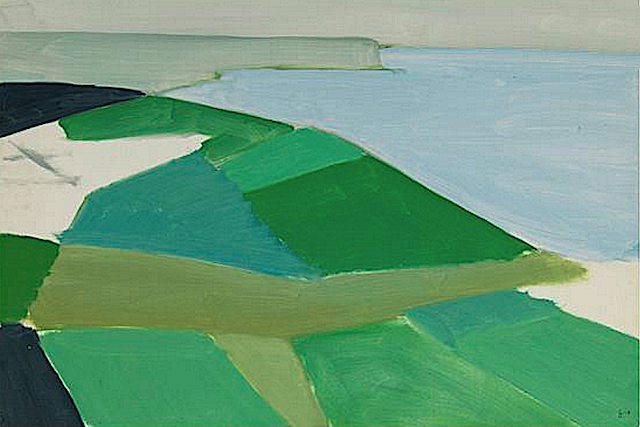JOSEPH SELLENY (1824-1896)
Licancabur (5,916m - 19, 409ft)
Chile - Bolivia
In The Atacama desert, Chile, with the Licancabur volcano beyond,
oil on canvas, 1858, Private collection
The Mountain
Licancabur (5,916m - 19, 409ft) is a stratovolcano on the border between Bolivia and Chile, south of the Sairecabur volcano and west of Juriques. Part of the Andean Central Volcanic Zone, it has a prominent high cone. A 400-metre (1,300 ft) summit crater containing Licancabur Lake, a crater lake which is among the highest lakes in the world, caps the volcano. Three stages of lava flow emanate from the volcano, which formed on Pleistocene ignimbrites.
Licancabur has been active during the Holocene, after the ice ages. Although no historic eruptions of the volcano are known, lava flows extending into Laguna Verde have been dated to 13,240 ± 100 BP. The volcano has primarily erupted andesite, with small amounts of dacite and basaltic andesite.
Its climate is cold, dry and very sunny, with high levels of ultraviolet radiation.
Licancabur is not covered by glaciers, and vegetation such as cushion plants and shrubs are found lower on its slopes. Chinchillas were formerly hunted on the volcano.
Licancabur is considered a holy mountain by the Atacameno people, related to the Cerro Quimal hill in northern Chile. Archeological sites have been found on its slopes and in the summit crater, which was possibly a prehistoric watchtower. The name "Licancabur" derives from the Kunza words used by the Atacameño people to refer to the volcano: lican ("people", or pueblo) and cábur ("mountain"); thus, "mountain of the people".
Because Licancabur is considered divine, attempts to climb it were discouraged and sometimes met by force; climbing it supposedly brought misfortune. It is said that Licancabur would punish people who climbed it, and the volcano is the mate of Quimal in the Cordillera Domeyko; at the solstices, the mountains overshadow one another. According to local myth, this copulation fertilizes the earth. Licancabur is considered "male" and a mountain of fire, in contrast to San Pedro (considered a mountain of water). The 1953 Antofagasta earthquake was considered divine retribution for an attempt to climb the mountain that year. According to legend, a golden object (most commonly a guanaco) was offered as tribute in the summit crater; human sacrifices have been reported on the volcano during the Inca pre-Columbian times.
Source:
- Mercuria Calama
The painter
Joseph Selleny (also Sellény) is an Austrian landscape painter, draftsman and lithographer and official illustrator. He studied at the Vienna Academy of Fine Arts and traveled to South Tyrol, Lombardy and Venice. He obtained a scholarship from the Academy in Rome and Naples in 1854-1855. He was introduced to the Archduke Ferdinand Maximilian who appreciates his works and asks him participates, as draftsman, in the expedition of the SMS Novara which circumnavigates the world in 1857-1859, under the command of Captain v. Wüllerstorf-Urbair. In the course of this expedition he produced more than 2000 watercolors, sketches and drawings representing the landscapes and the natives encountered, which on his return were a great success. He painted watercolor directly on a pattern, then works in his studio. In addition, he made engravings of the expedition in several newspapers of the time. He also photographs many views, at this time of the beginnings of photography which today constitute a real treasure. The publication of the report of the expedition in 21volumes further increases its notoriety, as many of the 224 illustrations of the first edition is inspired by his drawings.
Archduke Ferdinand Maximilian then invited Selleny to accompany him on his journey to North Africa, Cape Verde, the Canary Islands and Brazil. Selleny also designed landscaping projects, such as the Vienna Stadtpark (1862) or the castle of Miramare, owned by the archduke in Trieste. In 1867, tragically enough, the Archduke Ferdinand Maximilian was shot by the revolutionaries a few days after being crowned Emperor of Brazil. Then, Joseph Selleny felt in deep depression and settled in South Tyrol where he painted imposing landscapes. Suffering more or more of depression, he was taken to a nursing home in Inzersdorf, where he died at the age of fifty-one. A street in the district of Leopoldstadt in Vienna is dedicated to him.


























